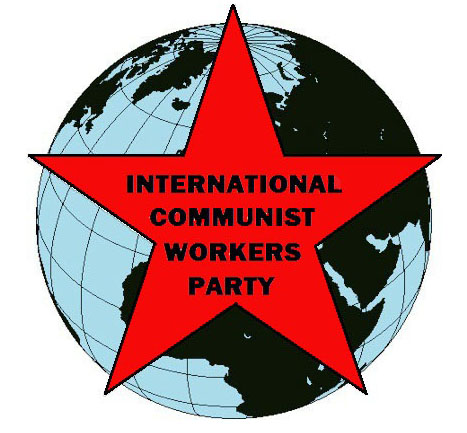
 |
FIGHT FOR COMMUNISM! |
International Communist Workers Party | |
In our last issue we began to work through this very influential essay. This time we will discuss serious errors in Mao’s article.
The Particularity of Contradiction
Contradictions in the different forms of motion of matter are qualitatively different. The contradictions in a moving car, in the circulation of money in a capitalist economy or in the growth of knowledge are all different, and each has its own essential features. Understanding these different contradictions requires finding their specific concrete features.
Mao wrote that different contradictions must be resolved in different ways. His examples included resolving the worker-capitalist contradiction by revolution and contradictions inside the party by criticism and self-criticism.
Mao was right that contradictions are resolved in different ways, but he does not explain what various kinds of resolution have in common. The most important common characteristic they have is that contradictions are resolved by becoming more intense, by the two sides of the contradiction interfering with each other more and more. A contradiction does not die out gradually. The capitalists do not give up and become workers; they fight harder the stronger the communist movement gets. Contradictions inside the party don’t just disappear; they are only resolved by intense discussions that win over most people to one view.
Mao did not explain that resolution needs intensification because he did not believe this. He thought that resolution required struggle, but that in certain contradictions, called “non-antagonistic,” struggle does not have to become more intense to produce resolution. We have discussed this wrong view before (see Red Flag, 12/4/2014) and will have more to say about it in Part III.
Fundamental Contradictions and Principal Contradictions
Mao adopted from Soviet sources the important distinction between a fundamental contradiction and a principal contradiction, but his views about principal contradictions are seriously wrong.
The fundamental contradiction in a process influences that process from beginning to end, like the contradiction between capitalists and workers under capitalism, but it isn’t always the strongest contradiction. A principal or main contradiction is the one that has the greatest influence on a process or system at any one time. The main contradiction can shift from one contradiction to another, but the fundamental contradiction remains the same (Red Flag, 9/19/2013).
In 2015 the main contradiction in the world is between imperialist powers, especially between the US and China. Working-class activism and capitalist repression express the fundamental worker-boss contradiction, but right now that conflict has less effect than the intensifying contradictions among imperialists.
Mao wrote that the main contradiction in China in the late ‘30s was the contradiction between the Chinese nation and Japanese imperialism. He claimed that class struggle within China, the fundamental contradiction, was only a secondary contradiction at that time.
For Mao the importance of the main contradiction was that you must give highest priority to resolving the main contradiction. This meant more effort to fight Japan than to fight class enemies. Mao said that the communists should actually ally themselves with their class enemies (capitalists and landlords) to fight Japan. He attacked communists who rejected allying with the capitalists who had killed tens of thousands of communists in the previous decade. Mao claimed that Japan was the “main target” and if you don’t shoot all your bullets at the main target, they will be wasted. Mao tried to use dialectics to defend this reactionary policy, which meant abandoning revolutionary political work until Japan was defeated.
Resolve the Fundamental Contradiction!
Mao was dead wrong about the significance of the principal contradiction. Communists don’t have to fight directly to resolve that contradiction. Doing that in 2015 would probably mean supporting one group of imperialists against others. Instead, communists should fight to mobilize the masses so that the main contradiction changes, so that the fundamental contradiction, capitalists vs. workers, becomes the main contradiction. Communists should work to resolve that contradiction as their primary task, dealing with other contradictions when necessary to advance the fight for communism. In particular we should use the weaknesses that the contradictions between imperialists produce—especially imperialist war—to resolve the fundamental contradiction with communist revolution.